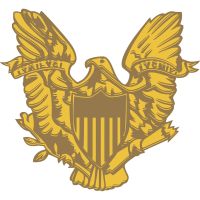Sanford, Florida Treasure Hunters End Summer with $300K Gold Bounty
Treasure hunters pulled 64 feet of thin gold chain, along with five gold coins and ring, from the ocean off the coast of Fort Pierce, Florida over the Labor Day weekend.
The treasure-hunting Schmitt family of Sanford, Florida discovered the small gold haul, the Orlando Sentinel reported. The family patriarch Rick Schmitt owns the firm Booty Salvage, which plying the Florida wreckage site on behalf of 1715 Fleet – Queens Jewels LLC, the company that owns the rights to dive on the wreckage site.
"To be the first person to touch an artifact in 300 years is indescribable," Brent Brisben, owner of 1715 Fleet-Queens Jewels, told the Orlando Sentinel on Monday. "They were there 150 years before the Civil War. It's truly remarkable to be able to bring that back."
Brisben said he conservatively valued the gold find at $300,000.
"This is like the end of a dream," said Rick Schmitt, who owns Booty Salvage.
Schmitt’s family and fellow diver Dale Zeak found the gold chain, rare gold coins, and the gold ring roughly 150 yards offshore and 15 feet below the surface. The gold chain weighed more than three pounds.
“The centuries-old loot came from a fleet of Spanish ships struck by a strong hurricane off Florida's coast on July 30, 1715. More than 1,000 people were killed in the storm that claimed 11 of the dozen ships,” wrote Desiree Stennett in the Orlando Sentinel.
“Mounds of gold, silver, and other artifacts were spilled across the ocean floor,” Stennett continued. “Some was recovered in the years after the storm, but many treasure hunters and historians believe that millions of dollars in silver and gold still remain, according to the Queens Jewels website.”
Florida's Treasure Coast was named after the disaster.
Earlier this summer, Brisben himself discovered a bounty in rare gold coins in July. Those 51 gold coins were estimated to be worth $250,000.
“The state gets the first pick of the treasure. Up to 20 percent of the rarest finds will be displayed in museums. The rest will be split equally between Brisben's company and the Schmitts,” wrote Stennett.









